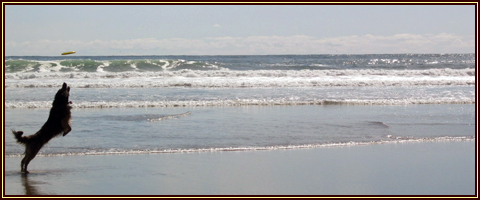Live Plants For Your Freshwater Aquarium
Saturday, October 9th, 2010You should always select freshwater aquarium plants which exist in your fish’s original habitat. This is true even though your individual probably has never “seen” or experienced his native habitat first hand.
In general, five types of plants can be used in your freshwater aquarium.
The first type of plant is grown from bulbs. Rather large plants are produced from these bulbs so they are only really suitable for large freshwater aquariums. These plants, such as the water lily and the aponogeton, are much better suited to outdoor settings, especially koi ponds.
Depending on the species of fish you choose, you may want to include plants that float. They make a good hiding place for young fry who need to avoid predators. Examples of these are Riccia and Fairy Moss.
Rhizomes are a group of live plants that you might also consider. This plant has a thick, horizontal stem with leaves sprouting on the top. This plant has roots growing down at the bottom of the stem. ‘Runners’ are produced across the surface of the substrate. As it grows, new roots and leaves are produced. Two common variation of Rhizomes are the Anubias and the African Fern. Planting these is easy. You simply tie them to the driftwood you already have in your aquarium.
There is a plant which looks like a crown with roots growing below it and leaves above. It is called a rosette. They grow over the gravel by shooting out runners and producing new plants as they go. Many times these plants, which include the Amazon Sword and the Sagittaria, also produce beautiful flowers.
A plant know as a stem has leaves growing from points on a single stem – hence the name! The lower end of the plant is well rooted into the substrate. These have several varieties of leaves – single, paired and multiple.
One of the most common of aquatic plants is the Java Moss. Also called the Java Fern, this particular species is a great starter plant. It is a really tough plant that does well in all kinds of water conditions.
Another easy plant perfect for the starter aquarist is the Water Wisteria. Like the Java Fern, this plant grows quickly. It’ll also help to keep the algae content in the tank low. You should not use too much of it because it can use up a lot of the nutrients in the water.
Another rugged plant is the Anubias Nana. This spetacularly tough plant can survive almost anywhere. It flowers in the water and is very pretty. And fish don’t seem to like eating it. For the Anubia Nana to truly do well, though, you’ll want to attach this plant to a tree root or a stone.
If your tank is exposed to a lot of strong sunlight then another good choice is Lillaeopsis it looks like grass.
If you’re truly ambitious at trying your hand at plants, consider purchasing the Cryptocoryne Beckettii. This is an amphibious plant – meaning it grows both underwater and on land. It does really well under water plus it comes in a variety of colours.
You should also consider the Echinodorus Bleheri better know as the Amazon Sword plant. This is, without a doubt, the most popular of all aquarium plants of all time. It requires very little care so its great for beginning aquarists. It a quick grower and it also controls the algea growth in your tank.
Your freshwater aquarium will be greatly enhanced by live plants. Certainly they require more care but in the long run they are definitely worth the extra trouble. Start slowly with a few hardy varieties of freshwater aquarium plants and gradually expand on these as you get more experienced. A well planted tank will make your fish feel completely at home and will give you the greatest of satisfaction!







